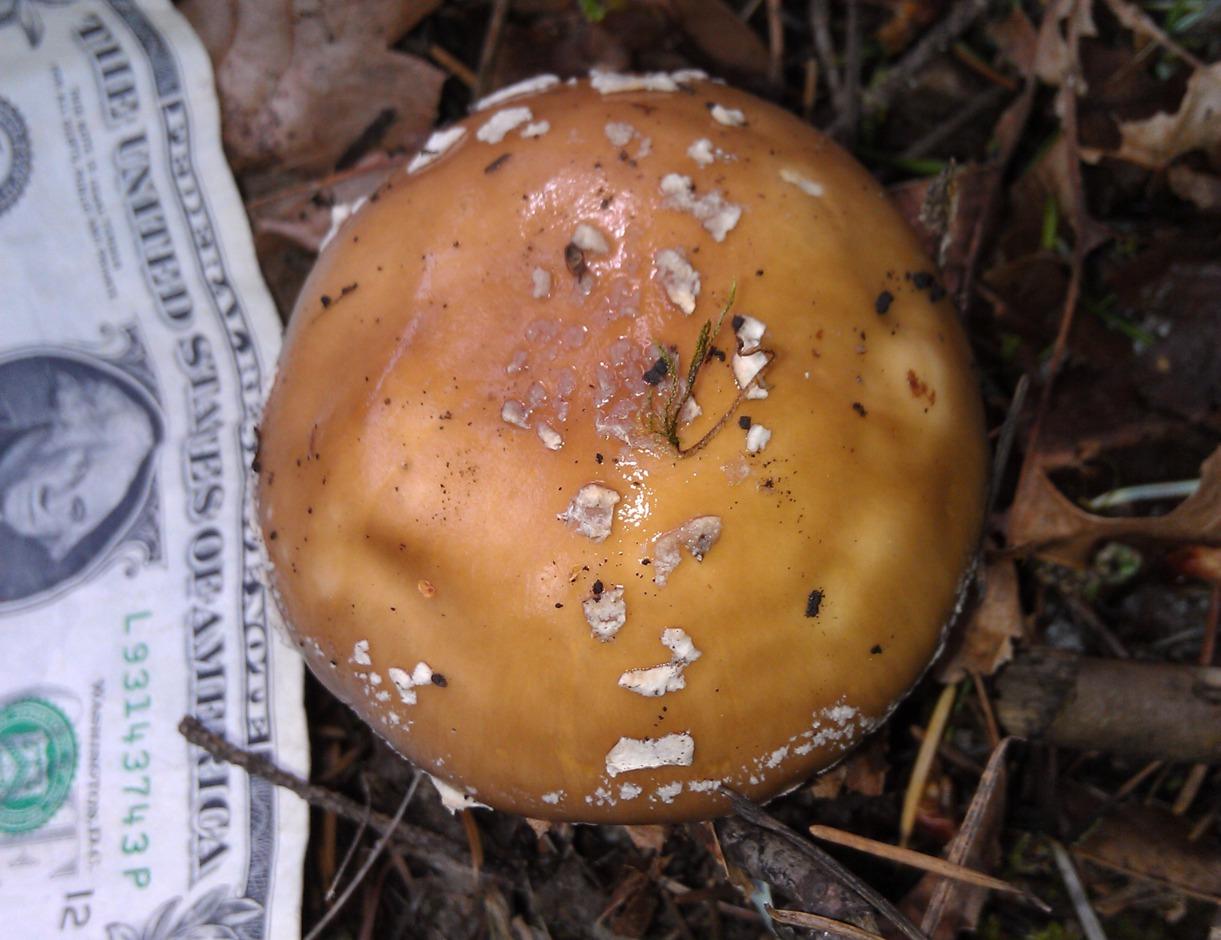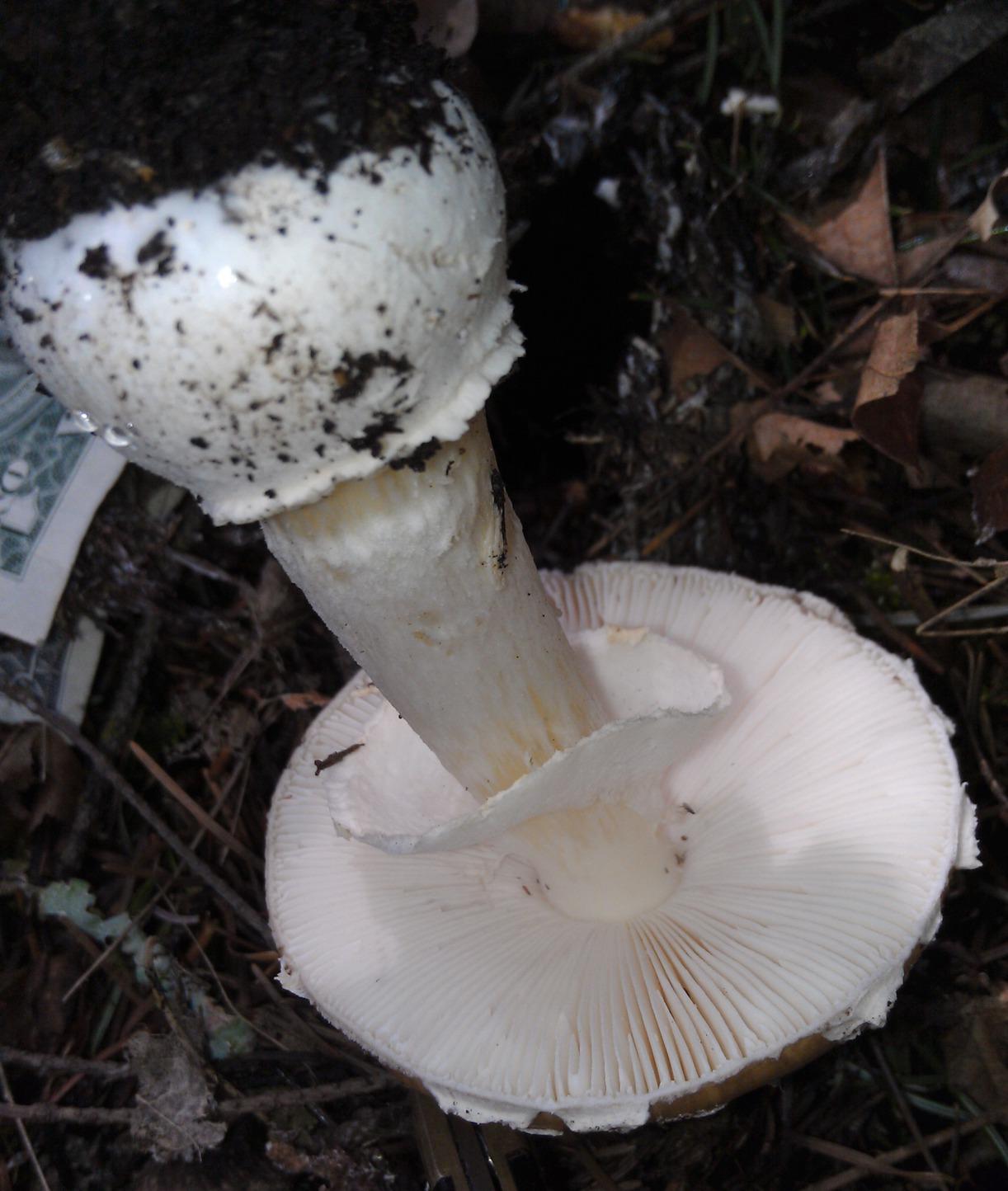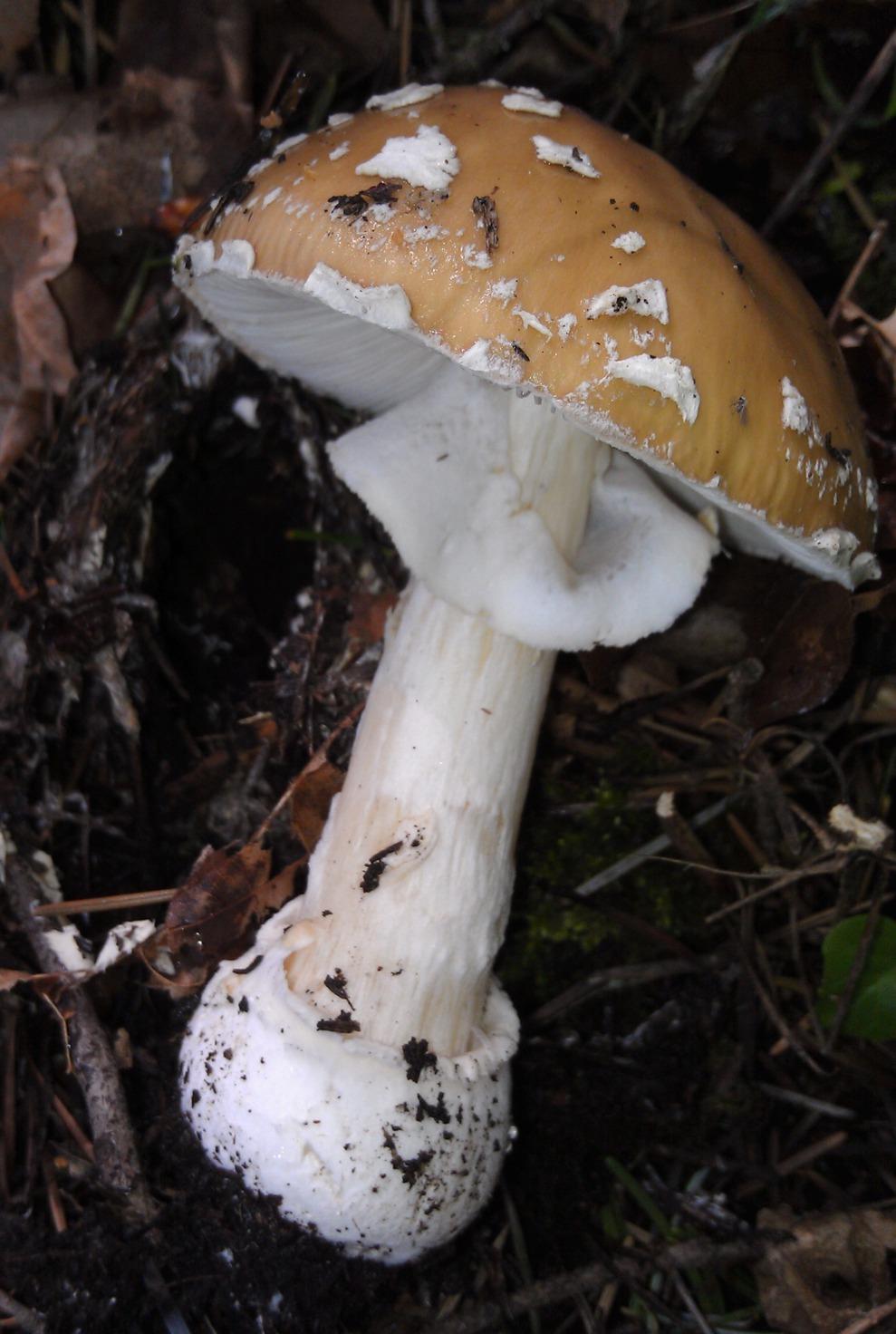Amanita pantherina
Posted by Mike P: 5/4/12 --- Scroll Down to ee the Discussion
Mike P: Three photos I took today while hiking.
This specimen was found under conifers.
I am 99% sure of ID, and I think it's one that everyone picking mushrooms here should know.
So what is the genus, and what is the species?
To give everyone a chance to figure it out, let's say no answers until Monday.
Elmer: Since I am the absolutely least knowledgeable in this group
I thought I should at least try to show that at a minimum
I do recognize a mushroom that I should not eat.
I believe it is Amanita pantherina
If I am again wrong, I will hang may head in shame,
but I still will not eat a mushroom that looks like that one.
Richard T: With this coloring I'd tend to guess Amanita muscaria, possibly aprica.
Mike P: Elmer and Richard, Good to get your answers
We had the following ID suggestions for my specimen:
Amanita muscaria, A. aprica, and A. pantherina.
The mushroom is definitely an Amanita,
as you can tell from the combination of volva,
white gills, ring, warts on the cap, and general aspect.
(Not that every Amanita has all those characteristics.) So far, so good.
Instead of just stating my opinion, I'll explain how I got there.
I hope it will be helpful and not too tedious. Local experts will,
I hope, correct any mistakes.
The specimen has a light brown cap; white warts, some of which may have fallen off ;
a striate (grooved) cap margin; and a bulblike volva with a free rim.
It was found in the woods.
It looks similar to A. muscaria, but fails to match in two respects:
(1) Color. Every A. muscaria I have seen was yellow, red, or orange.
There is a white to buff variety,
but MatchMaker labels it rare in our area,
and this specimen isn't white to buff, anyway.
(2) Volva. A frequently noted characteristic of A. muscaria
is a volva with concentric rings above the bulb.
Therefore, without ruling out A. muscaria completely,
I continued looking for a better match.
A. aprica (a species first described by OMS member Jan Lindgren)
is the right stature and general appearance, but its details don't match well, either.
First, its characteristic color is a bright, sunny, yellow-orange.
That can fade, but it seems unlikely it would fade to (the observed)
light brown rather than to paler yellow.
Second, its volva has the same concentric rings as A. muscaria.
Third, it is characterized by universal veil tissue that grows into the cap surface,
so its warts can't be scraped off easily with a thumbnail.
That's hard to see from a photo!
But the warts on my specimen were not attached firmly to the cap.
That brings us to A. pantherina -- Elmer's ID and mine, too.
This gives a positive match with field guide descriptions of cap color,
viscid surface when moist, character of warts (detachable),
striate margin, skirtlike veil, and stem widening downwards to a bulb-like volva.
In particular, the free rim at the top of the volva is noted in guidebooks
(and in MatchMaker) as a good diagnostic.
Since no characteristic failed to match guidebook descriptions,
and the species is found frequently in our area,
A. pantherina seems a good ID, as well as beating the other choices.
I looking around the Internet for information on A. pantherina,
I found that physically it is quite similar to A. gemmata,
which tends more towards yellow tones, and that it is thought -- or at least speculated --
that the species intergrade.
Is this one a hybrid? I have no idea.
This looks like an area of taxonomy that will need DNA analysis to clarify further.
The main points for people learning mushroom ID are
(1) You can learn a lot with a Google search;
(2) Don't stop looking once you discover a pretty good match; and
(3) ID from field characters is rarely 100% certain -- it's a matter of probabilities.
Richard T: On my computer the color was tending toward yellow,
most of the pantherina I've encountered are darker tending toward brown.
Thanks for your detailed research.
Mike P: Yes. Color, which can be important for mushroom ID, is quite subjective
-- and even more so in the age of computers.
Sava: Thanks for this quiz and for what you wrote about A. pantherina, muscaria, aprica, and gemmata. They are all common here and worth knowing. I'm sure we'll be discussing Amanitas more, but this is a great start.
Everybody should note the collar that the outer veil (volva) makes at the bottom of the stem and that Mike's photos show really well. Please remember this characteristic of A. pantherina and also to always pay attention to the bulb & volva when you collect Amanitas; they may be partly hidden in the ground.
Amanita muscaria typically grows in the Fall.
The earliest I've seen it is in August, at high elevation (4,000-5,000 feet).
Has anyone seen it in Spring?





